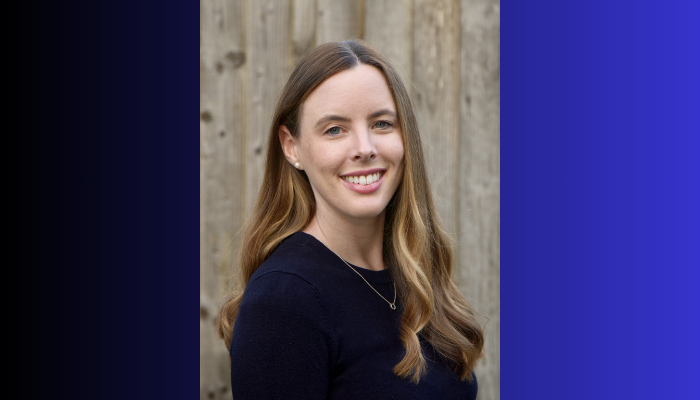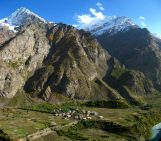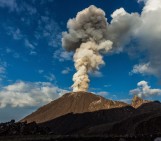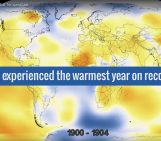
Hello Megan! Welcome to GeoTalk. Could you tell our readers a little bit about yourself and your background?
Hi Simon, thank you for inviting me to GeoTalk! I am originally from Australia and studied geology and geophysics at the University of Sydney. After I finished my undergraduate degree, I worked as an earth scientist for almost seven years. I really enjoyed my time in industry, but I felt the world of research calling! In 2018, I moved to the UK to begin a PhD at the University of Cambridge.
Underpinning my research is the concept of ‘dynamic topography,’ which is essentially the warping of the Earth’s surface due to the slow stirring of the Earth’s interior. Mantle plumes gradually cause an upward deflection of the Earth’s surface by hundreds of meters, and mantle drawdowns slowly draw the Earth’s surface downwards. During my PhD, I focused on constraining the magnitude of this movement in order to better understand mantle convection.
Your research considers the interaction between the movement of the Earth’s mantle and its surface. To many this brings about images of volcanoes and continental rifts, but it can also affect everything from climate change to ocean circulation. How does research into mantle dynamics help us understand these processes?
Yes, understanding mantle dynamics is important for investigating a variety of surface processes. For example, the warping of the Earth’s surface by mantle convection gradually changes the volume of ocean basins, which will influence sea level change over time. As tectonic plates move, seaways open and close, influencing oceanic circulation. In addition, heat flow from mantle plumes will influence the melting of ice-caps. Our understanding of mantle dynamics will also be important for the energy transition too. For example, my research as a post-doc is supporting the acceleration of geothermal energy.
How does scientific research in mantle dynamics help accelerate a transition to geothermal energy?
Geothermal energy is currently used in a handful of specific locations, like Iceland and western USA. To unlock the enormous potential of geothermal energy, and bring this technology to new regions, we need to improve our understanding of the subsurface. As geothermal energy relies on heat generated within the Earth, the distribution of this resource is influenced by the interplay between mantle convection, lithospheric structure and heat flow.
To shed light on this complex puzzle, Project InnerSpace has launched a global geothermal mapping initiative called GeoMap. Our research group has been awarded a grant by Project InnerSpace to support the development of GeoMap, which brings together all of the key subsurface datasets that are important to understand geothermal prospectivity on a global scale. It’s a huge task and I’m working alongside a really diverse group of earth scientists – including seismologists, geologists, geophysicists and many more – who are contributing data. Importantly, GeoMap is openly accessible, which means anyone can access our results.
You’re also the Early Career Scientist (ECS) Representative for the EGU Geodynamics Division. Part of your role involves organising events at the 2024 EGU General Assembly, both for the ECS community and for sessions dedicated to Geodynamics as a subject. Can you tell about what you’re up to?
As an ECS rep, my aim is to create a welcoming environment for early-career scientists at the General Assembly. Together with the Geodynamics Division ECS team, and ECS reps from other divisions, I organise a number of networking events. In particular, I really enjoy the Geodynamics Division ECS dinner, as it’s a great opportunity to connect with other early-career scientists from around the world. This event always sells out, so I am in search of a bigger venue for EGU24!
Another fun event is the Icebreaker, which is held on the Sunday before the start of the General Assembly. This event is co-organised with the Geodesy and Seismology Divisions, and it provides a nice opportunity to meet new people in a relaxed atmosphere. As we approach EGU24, I will provide more details about these events (and many more!) on social media (@EGU_GD).
In terms of the scientific program, I am looking forward to co-convening a session called “Understanding the influence of lithospheric, crustal and sedimentary architecture on resource distribution.” This session will bring together researchers who are investigating the first-order processes that influence the spatio-temporal distribution of resources. We are especially interested in resources that are important for the energy transition, such as base metals and rare earth elements.
This topic will become more and more important as countries continue to commit to increasingly ambitious energy transition goals. For this session, we are interested in hearing from researchers in industry, academia and government organisations. If you would like to submit an abstract, just follow this link.
As part of the Geodynamics ECS team, could you tell us more about what you do and how people can get involved?
I am really enjoying my time as the ECS Representative for the Geodynamics Division (GD). Each division in EGU has an ECS Representative, and it’s our role to represent the interests of early career scientists. We organise networking events, convene short-courses and run the ECS booth at the General Assembly.
During the year, the GD ECS team engages in outreach through the Geodynamics Division Blog and we keep everyone informed through social media. EGU24 will mark the end of my two-year term as the GD ECS Representative and we have recently opened applications to become the next rep! If you’re interested in learning more about the role and how to apply, visit my blog post.
Beyond this position, we are always looking for enthusiastic volunteers to join the GD ECS team. We have opportunities for any interest and area of expertise, from blog editors, illustrators, social media managers, and short course conveners. If you’d like to get involved or have any questions, please don’t hesitate to reach out (ecs-gd@egu.eu).



